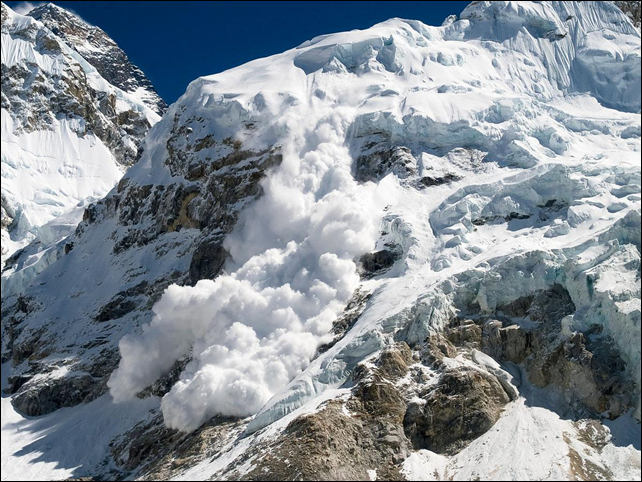Worst-ever climbing disaster on Mt. Everest: Was avalanche caused by global warming?
By Marc Lallanilla
18 April 2014 (LiveScience) – The icy slopes of Mount Everest have seen hundreds of deaths in the years since 1922, when seven people perished during the British Mount Everest Expedition. An avalanche today (18 April 2014) claimed at least 12 lives, in what may be the single deadliest climbing event in the history of the world’s tallest mountain (29,029 feet, or 8,848 meters). The death toll may rise, because other climbers are still missing, according to the BBC. All of the deceased were guides from the ethnic Sherpa community, who were securing ropes for the start of the spring climbing season. And many Sherpas insist that Mount Everest and other mountains in the area have become more dangerous because of climate change. [Ice World: Gallery of Awe-Inspiring Glaciers] “In 1989 when I first climbed Everest there was a lot of snow and ice, but now most of it has just become bare rock. That, as a result, is causing more rock falls, which is a danger to the climbers,” said Apa Sherpa, a Nepali climber, as quoted in Discovery News. “Also, climbing is becoming more difficult, because when you are on a [snowy] mountain you can wear crampons, but it’s very dangerous and very slippery to walk on bare rock with crampons,” he added. Avalanches have been around for centuries, of course, and researchers can’t blame any single event on climate change. Some evidence exists, however, that a warming planet and changes in precipitation may increase the likelihood of certain types of avalanches at certain times of the year. A 2001 study from the Annals of Glaciology found that increases in temperature and precipitation could slightly decrease the risk of avalanches in mid-winter in France, but could significantly increase the risk of spring avalanches. Those findings were echoed in a 2013 report from the journal Applied Snow and Avalanche Research, which found that in Canada’s Glacier National Park, an increase in rain (instead of snow) during the winter could result in greater instability in the snowpack, leading to more late-winter avalanches. […] There’s some concern in the mountaineering community that mountains like the iconic Everest may be unclimbable in the near future. “What will happen in the future I cannot say but this much I can say from my own experiences — it has changed a lot,” Apa Sherpa said. [more]
Mt. Everest Avalanche: Is Climate Change to Blame?
18 April 2014 (NBC News) – An avalanche swept down a slope of Mount Everest on Friday along a route used to ascend the world’s highest peak, killing at least 13 people in the mountain’s deadliest disaster. NBC News confirmed that all of the dead were Sherpa guides. The guides had gone early in the morning to fix the ropes for hundreds of climbers when the avalanche hit them just below Camp 2 around 6:30 a.m. local time, Nepal Tourism Ministry official Krishna Lamsal told The Associated Press. Tilak Ram Pandey, an official at the ministry’s mountaineering department, later told Reuters that some other people were thought to be missing. Hundreds of climbers, their guides and support guides had gathered at the base camp, gearing up for their final attempt to scale the 29,035-foot peak early next month when weather conditions get favorable. They have been setting up their camps at higher altitudes and guides fixing routes and ropes on the slopes ahead of the final ascend to the summit in May. As soon as the avalanche hit, rescuers and fellow climbers rushed to help. A helicopter was also sent. Ang Tshering of the Nepal Mountaineering Association said that the area where the avalanche occurred is nicknamed the “popcorn field,” which is just below Camp 2 at 21,000 feet. [more]
At Least 13 Sherpas Dead as Avalanche Sweeps Mount Everest
